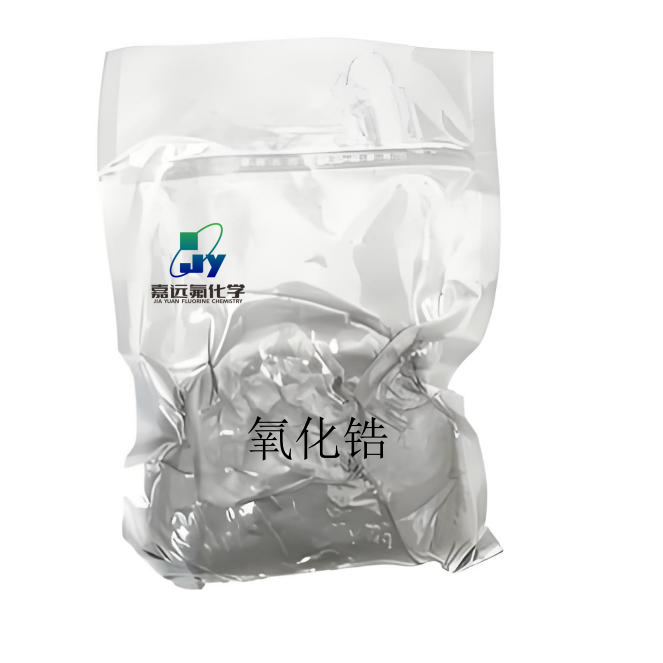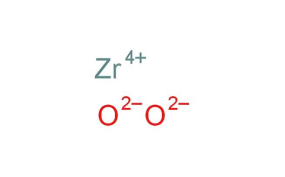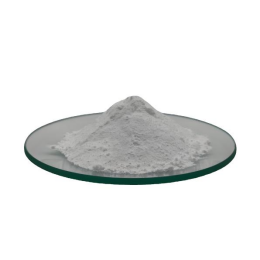



Customized products
Zirconium dioxide;Zirconia
Domestic product consultation
0086-15366800998
Foreign Trade Hotline
0086-15366800998
Product Details
Basic Information:
Product Name: Zirconium dioxide;Zirconia
Abbreviation:ZrO2
Synonyms:Zirconium(Ⅳ)oxide, Zirconium oxide, Zirconium dioxide
CAS:1314-23-4
Molecular formula:ZrO2 [Customs Code]: 28256000
Molecular weight:123.223 Einecs:215-227-2
Structural formula:
Brief description:
Zirconium dioxide, with the chemical formula ZrO2, is the main oxide of zirconium. It is usually white, odorless and tasteless crystals, and is difficult to dissolve in water, hydrochloric acid and dilute sulfuric acid. It is chemically inactive and has the properties of high melting point, high resistivity, high refractive index and low thermal expansion coefficient, making it an important high temperature resistant material, ceramic insulation material and ceramic sunscreen, and also the main raw material for artificial diamonds.
Technical indicators:
Analyze Project | Analysis | Requirement |
Appearance | Appearance | Gray fine powder |
density | Densities | 5.85 g/cm³ |
Melting point | Melting point | 2700℃ |
Boiling Point | Boiling point | 4300℃ |
purity(%) | Fineness | 89.5% |
use:
1. Used in making metal zirconium and zirconium compounds, refractory bricks and crucibles, high-frequency ceramics, grinding materials, ceramic pigments and zirconates, etc. It is mainly used in piezoelectric ceramic products, daily ceramics, refractory materials and zirconium bricks, zirconium tubes, crucibles, etc. for precious metal smelting. It is also used in the production of steel and non-ferrous metals, optical glass and zirconium dioxide fibers. It is also used in ceramic pigments, electrostatic coatings and baking varnishes. It can be used in epoxy resin to increase the corrosion resistance of hot salt water.
2. Zirconia fiber is a polycrystalline refractory fiber material. Due to the high melting point, non-oxidation and other excellent high-temperature properties of ZrO2, ZrO2 fiber has a higher operating temperature than other refractory fiber varieties such as alumina fiber, mullite fiber, and aluminum silicate fiber. Zirconia fiber can be used for a long time in an ultra-high temperature oxidizing atmosphere above 1500 ℃, with a maximum operating temperature of up to 2200 ℃, and can even maintain a complete fiber shape at 2500 ℃. It is also the world's top refractory fiber material with stable high-temperature chemical properties, corrosion resistance, oxidation resistance, thermal shock resistance, non-volatile, and pollution-free. ZrO2 is much more resistant to acid and alkali corrosion than SiO2 and Al2O3. It is insoluble in water, soluble in sulfuric acid and hydrofluoric acid; slightly soluble in hydrochloric acid and nitric acid. It can be eutectic with alkali to form zirconate.
3. The application of plasma sprayed zirconium dioxide thermal barrier coatings in aviation and industrial gas turbines has made great progress and has been used in the turbine section of gas turbines to a certain extent. Since this coating can reduce the temperature of air-cooled high-temperature components by 50~200℃, it can significantly improve the durability of high-temperature components, or allow the gas temperature to be increased or the required amount of cooling gas to be reduced while keeping the temperature of the high-temperature components unchanged, thereby improving the efficiency of the engine. [3]
4. Zirconia is used as raw material in the kiln industry because of its high refractive index, high melting point and strong corrosion resistance. Piezoelectric ceramic products include filters, speakers, ultrasonic and hydroacoustic detectors, etc. There are also daily-use ceramics (industrial ceramic glazes), zirconium bricks and zirconium tubes for precious metal smelting, etc. Nano-grade zirconium oxide can also be used as a polishing agent, abrasives, piezoelectric ceramics, precision ceramics, ceramic glazes and matrix materials for high-temperature pigments.
5. In addition, zirconium oxide can be used in the manufacture of incandescent gas lampshades, enamel, white glass, refractory crucibles, etc. X-ray photography. Abrasive materials. Together with yttrium, it is used to manufacture light source lamps in infrared spectrometers, thick film circuit capacitor materials, and piezoelectric crystal transducer formulas. It is often used as an oxidant in laboratories.
Storage conditions:
1. It should be stored in a dry warehouse and should not be stored or transported together with strong alkaline items.
2. Avoid direct sunlight and high temperature environment to prevent zirconium oxide from decomposing due to heat or reacting with other substances.
Package:
1. 25kg/bag woven bag.
2. Other forms of packaging can be provided according to customer needs.
Chemical properties:
1. Zirconium dioxide obtained by burning zirconium dioxide hydrate or volatile oxygen-containing acid zirconium salt is a white powder and is insoluble in water.
2. Zirconium dioxide obtained by mild calcination is relatively easy to be dissolved by inorganic acids; zirconium dioxide obtained by strong heat calcination is only soluble in concentrated sulfuric acid and hydrofluoric acid, and zirconium dioxide that has been melt-recrystallized only reacts with hydrofluoric acid.
3. Zirconium dioxide is an amphoteric oxide that can form zirconates when melted with alkali. However, zirconates are easily hydrolyzed and precipitated when exposed to water.
4. Zirconium dioxide reacts with carbon and chlorine at high temperature, or reacts with carbon tetrachloride to generate zirconium tetrachloride and zirconium oxychloride, which are hydrolyzed to obtain zirconium dioxide again.
5. It reacts with carbon in the arc to form zirconium carbide.
photo:

Plant Evironment